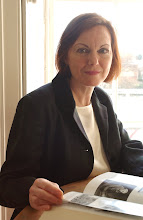

 Dr Chris Hilton, an archivist at the Wellcome Library, London, told me about a memorial to Dr Richard Baker Bellyse (1809-1877) in the village of Audlem, Cheshire. Chris was brought up in Audlem and passed the memorial every day on his way to school.
Dr Chris Hilton, an archivist at the Wellcome Library, London, told me about a memorial to Dr Richard Baker Bellyse (1809-1877) in the village of Audlem, Cheshire. Chris was brought up in Audlem and passed the memorial every day on his way to school.The memorial consists of a lampstand in Stafford Street adjacent to St James's Church in the centre of Audlem. It was unveiled in 1877, the year of Bellyse's death and inscribed: 'In memory of Richard Baker Bellyse who practised as a surgeon in this town for 40 years. Born 17th May 1809, died 11th January 1877. A man he was to all the country dear. In appreciation of a life spent in relieving the sufferings of his fellow creatures. By medicine life may be prolonged yet death will seize the doctor too.' There is more information about the fabric of the memorial on the Public Monument and Sculpture Association website. The modern picture (top) was taken by Chris and the historical photograph (below) is copyright of the Audlem District History Society Archive for Audlem Online. It looks to have been taken late in the 19th century when the memorial was quite new.
Richard Baker Bellyse came from a prosperous and well known local family of doctors who practised as general practitioners. The Medical Directory of 1866 lists his qualifications as MRCS (Member of the Royal College of Surgeons of England) 1837, and LSA (Licence of the Society of Apothecaries) 1837. These were the traditional qualifying diplomas for GPs in the 19th century. Bellyse is also listed as a public vaccinator (Medical Directory entry pictured above). This means that he was responsible for vaccinating the community against smallpox. Government legislation from 1853 made vaccination in Britain compulsory.
Another Bellyse - Edwin Swinfen - is listed in the Medical Directory. He qualified MD at Edinburgh in 1843 and lists additional qualifications as LSA 1843, FRCS Edinburgh 1860. He also practised in Audlem and may have been Richard's brother.
Chris Hilton says that Richard Baker Bellyse is remembered in Audlem as a big fan of cock-fighting and was clearly well-rooted in the community. Both his mother and father belonged to notable local families. Alice Ford-Smith (now Principal Librarian at Dr Williams's Library, London) found an item in the Lancet to Bellyse being censured, late in his career, for prescribing medicine without visiting a patient. He apparently sent an assistant who was not medically qualified to visit the patient and make a diagnosis. Unfortunately, I don't have the reference for this item.


